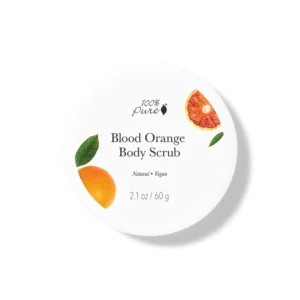Clean Body Care Tips for Sandal-Ready Feet

As the weather warms up, it’s time to bid farewell to boots and hello to sandals. However, if your feet are suffering from cracked heels, you may be hesitant to show them off. Fear not! With the right clean body care tips, you can transform your dry, cracked heels into smooth, sandal-ready feet. In this blog post, we’ll explore three effective tips to help you hydrate and rejuvenate your heels, so you can confidently step out in style this season.
Cracked heels, also known as heel fissures, occur when the skin around the heel becomes dry, thickened, and dehydrated. Factors such as dry air, harsh soaps, hot showers, and prolonged standing can contribute to the development of cracked heels. Left untreated, cracked heels can lead to discomfort, pain, and even infections. Therefore, it’s essential to address the issue promptly and incorporate hydrating solutions into your body care routine.
Tip 1: Exfoliate Regularly to Remove Dead Skin Cells
Exfoliation is a crucial step in treating cracked heels and promoting smooth, healthy skin. By sloughing away dead skin cells, you can reveal softer, more supple skin underneath and enhance the effectiveness of moisturizing products. Here’s how to incorporate exfoliation into your clean body care routine:
Choose a gentle foot scrub or pumice stone: Opt for a natural foot scrub or pumice stone specifically designed for exfoliating rough, dry skin on the feet. These products help remove dead skin cells and smooth rough patches, preparing your heels for hydration.
Exfoliate during your bath or shower: Use your foot scrub or pumice stone to exfoliate your heels while bathing or showering. Gently massage the scrub or stone in circular motions over your heels and any other areas of rough skin. Pay extra attention to the heels and the sides of the feet, where cracks are most likely to develop.
Rinse thoroughly and pat dry: After exfoliating, rinse your feet thoroughly with warm water to remove any residue. Pat your feet dry with a soft towel, being careful not to rub too harshly, as this can further irritate the skin.

Tip 2: Moisturize Daily to Hydrate and Soften the Skin
Moisturizing is essential for replenishing moisture and restoring elasticity to dry, cracked heels. Choose clean body care products formulated with nourishing ingredients that hydrate and soothe the skin without clogging pores or causing irritation. Here’s how to incorporate moisturization into your daily routine:
Select a hydrating foot cream or balm: Look for a clean foot cream or balm enriched with moisturizing ingredients such as shea butter, coconut oil, glycerin, and vitamin E. These ingredients help lock in moisture, soften rough skin, and promote healing.
Apply moisturizer generously: After exfoliating, apply a generous amount of foot cream or balm to your heels and the soles of your feet. Massage the moisturizer into your skin using circular motions, focusing on areas of dryness and roughness.
Cover with socks overnight: For an extra hydration boost, wear a pair of clean cotton socks after applying moisturizer to your feet. This helps seal in moisture and allows the cream or balm to penetrate deeply into the skin while you sleep, leaving your heels feeling soft and smooth in the morning.

Tip 3: Protect and Prevent with Regular Foot Care
In addition to exfoliating and moisturizing, it’s essential to protect your feet and prevent further damage by practicing good foot care habits. Here are some additional tips to keep your heels healthy and crack-free:
Avoid walking barefoot: Limit walking barefoot, especially on hard surfaces like tile or concrete, as this can increase pressure on your heels and exacerbate cracks. Wear supportive shoes or sandals with cushioned soles to provide adequate protection and support for your feet.
Stay hydrated: Drink plenty of water throughout the day to keep your body hydrated from the inside out. Hydration helps maintain the natural moisture balance of your skin and prevents dryness and cracking.
Trim nails and calluses: Regularly trim your toenails straight across to prevent ingrown toenails and reduce pressure on your heels. Use a foot file or callus remover to gently remove any thickened skin or calluses around your heels.
With these three clean body care tips, you can effectively hydrate and rejuvenate your cracked heels, leaving them smooth, soft, and sandal-ready. By incorporating exfoliation, moisturization, and regular foot care into your routine, you can enjoy healthy, beautiful feet all season long. Say goodbye to cracked heels and hello to confidence as you step out in style with smooth, sandal-ready feet.

